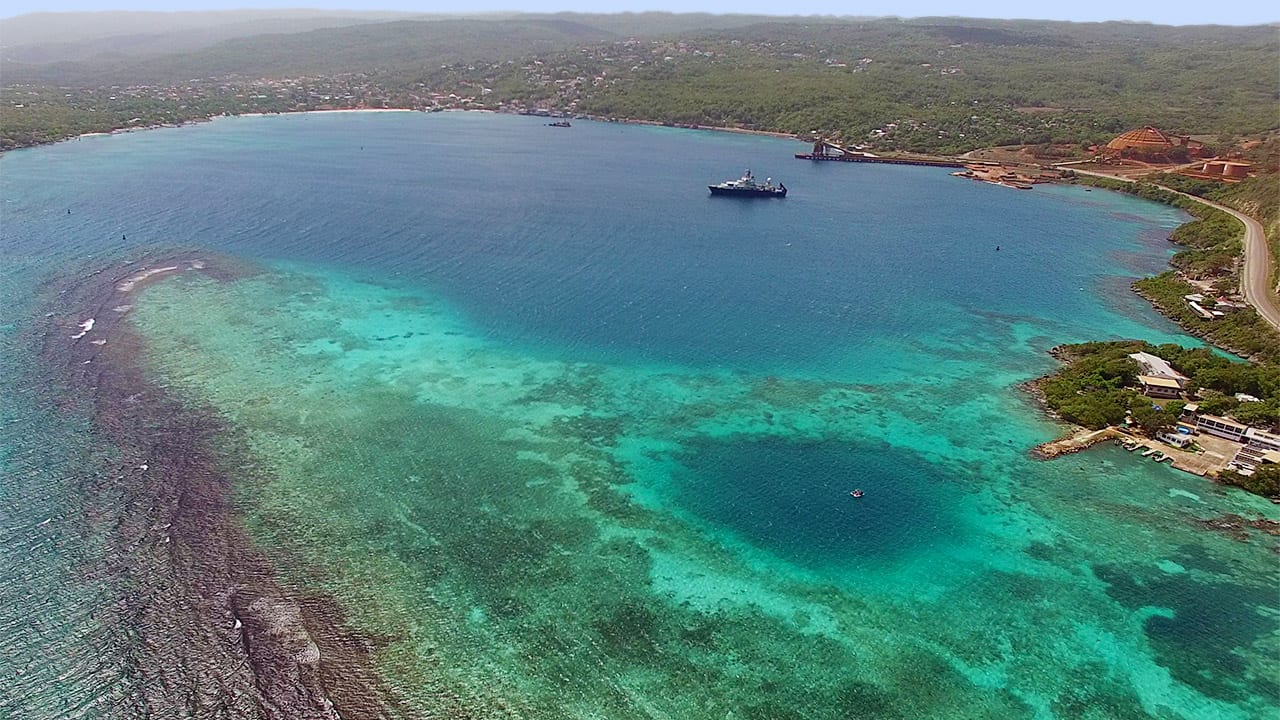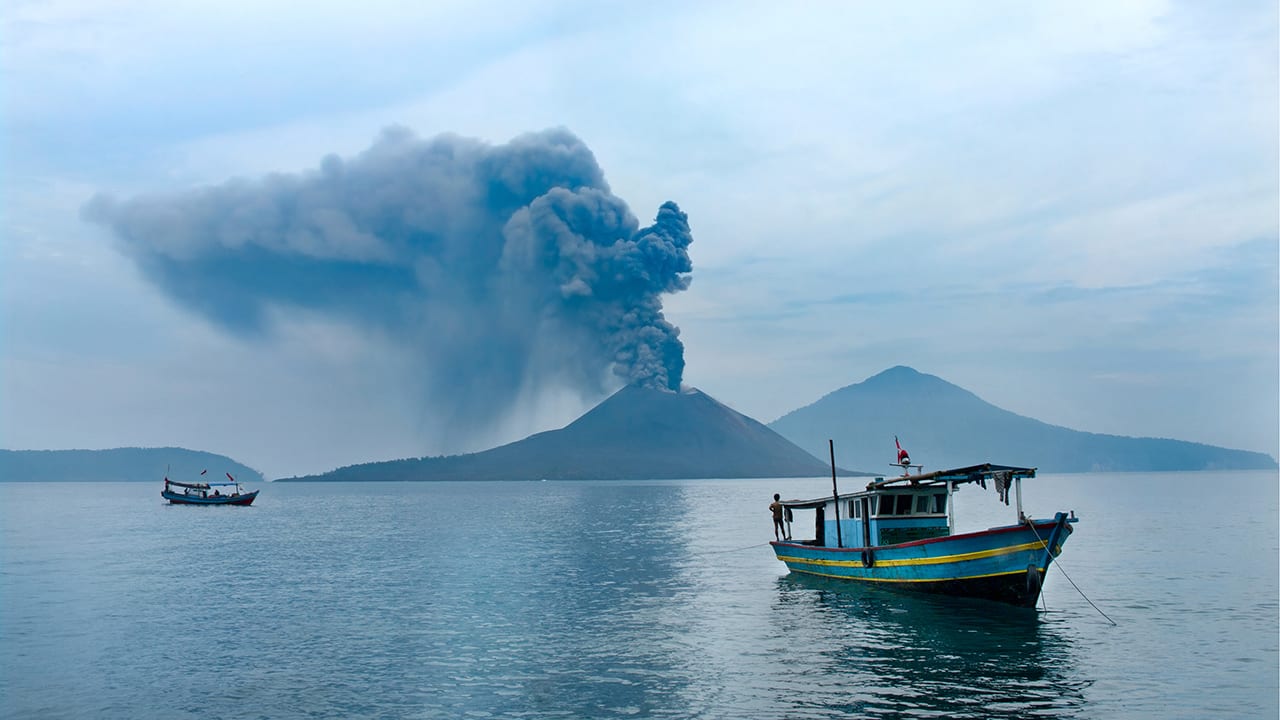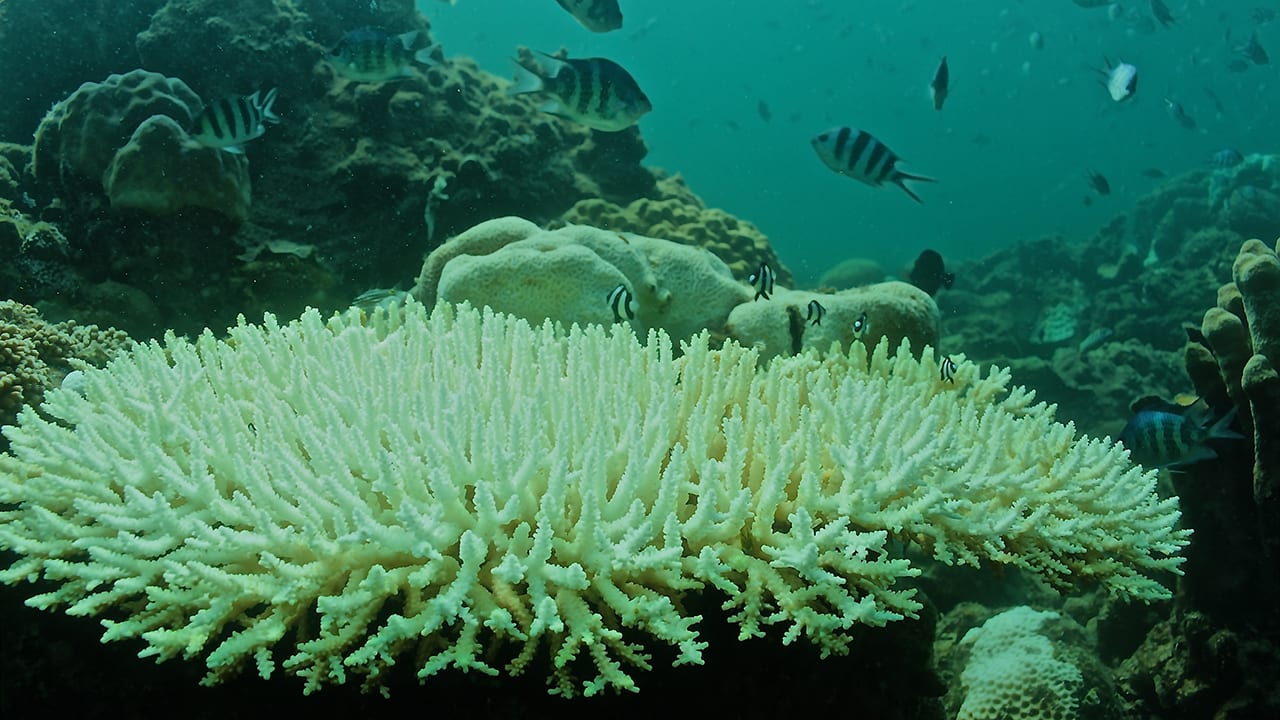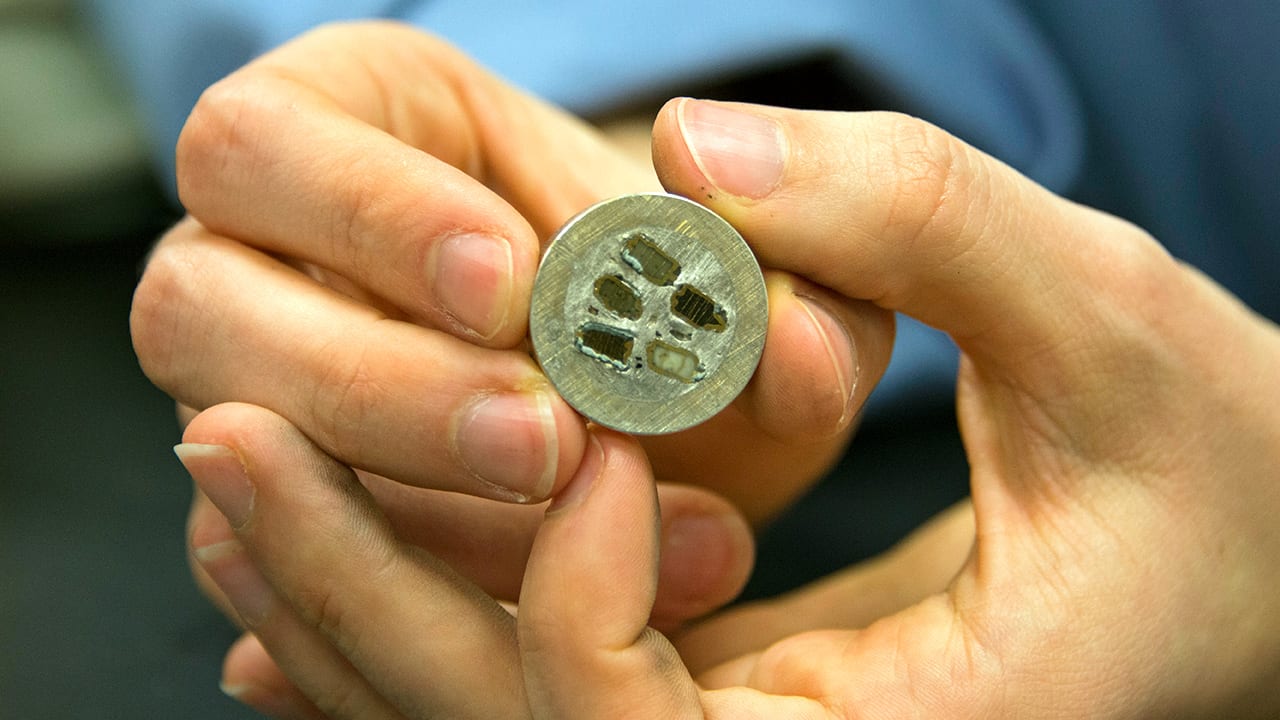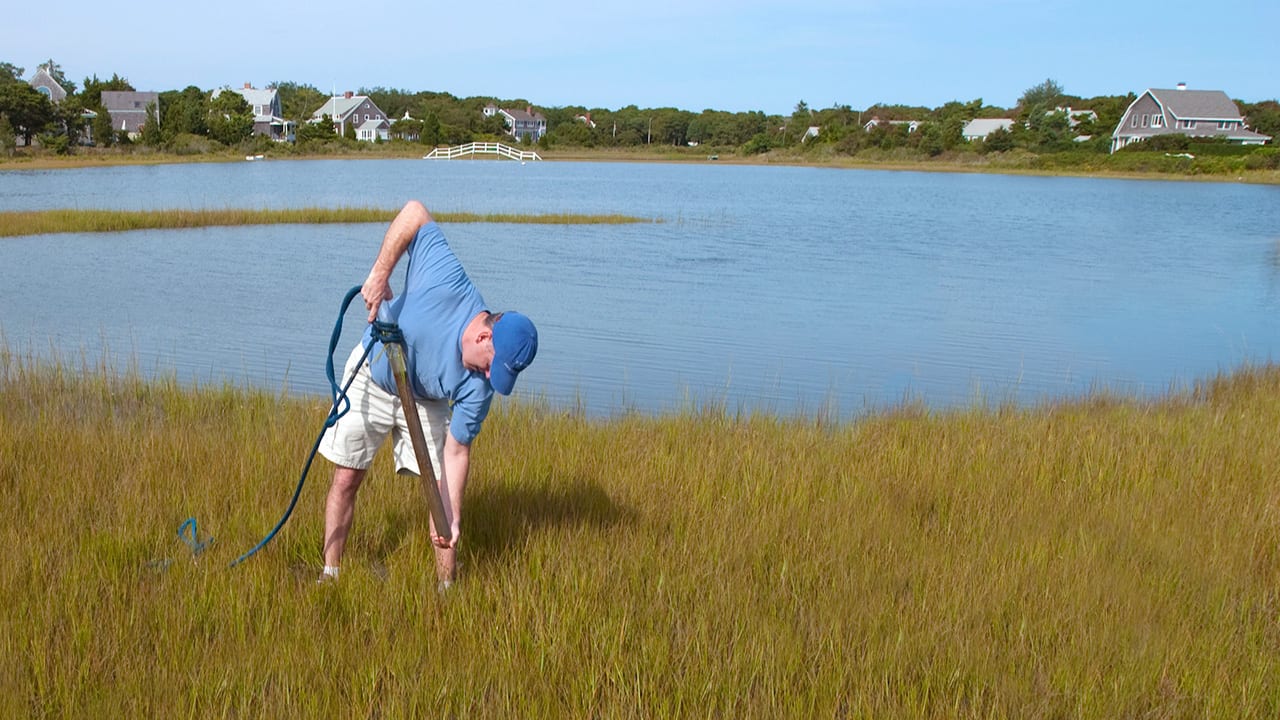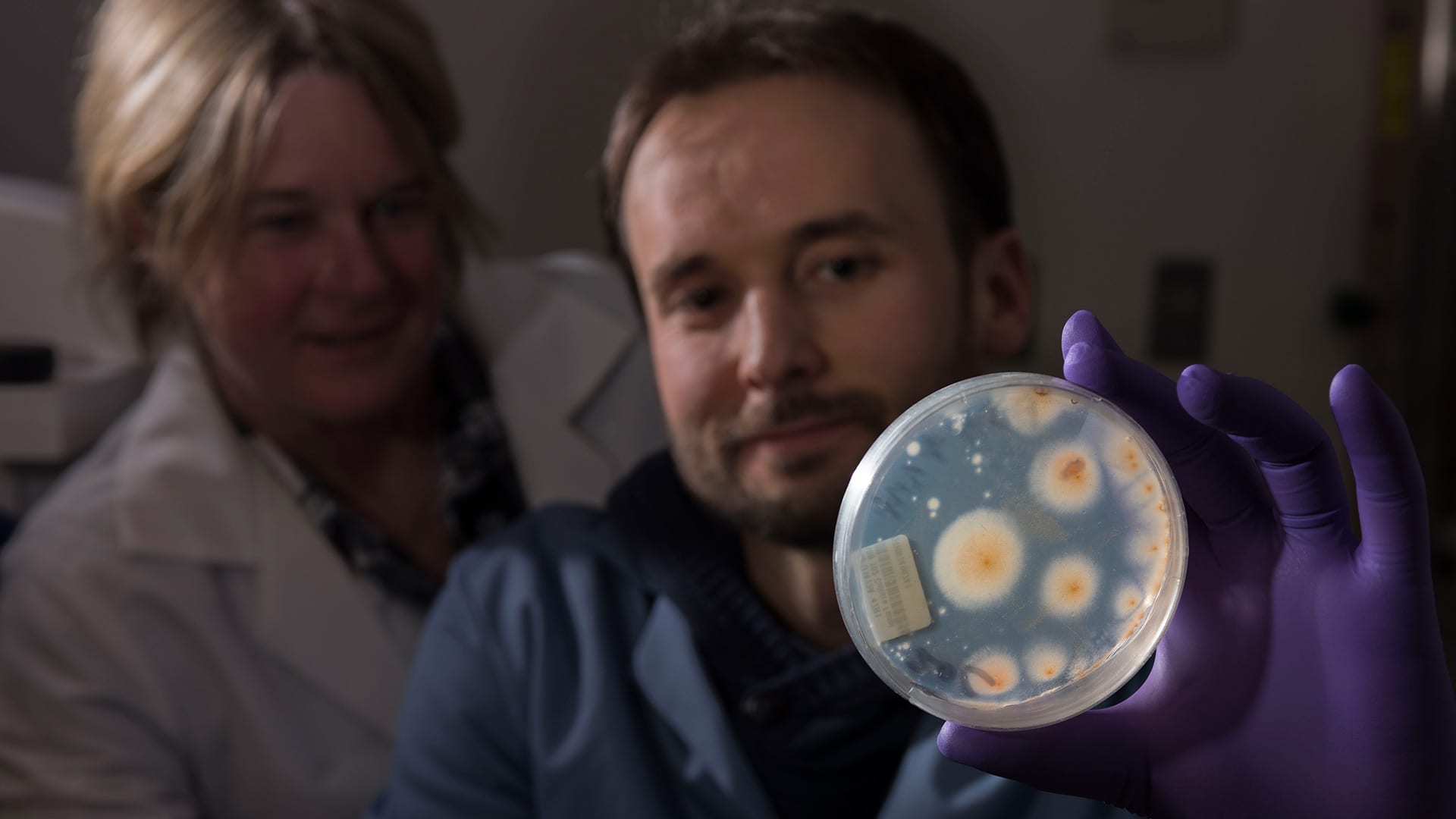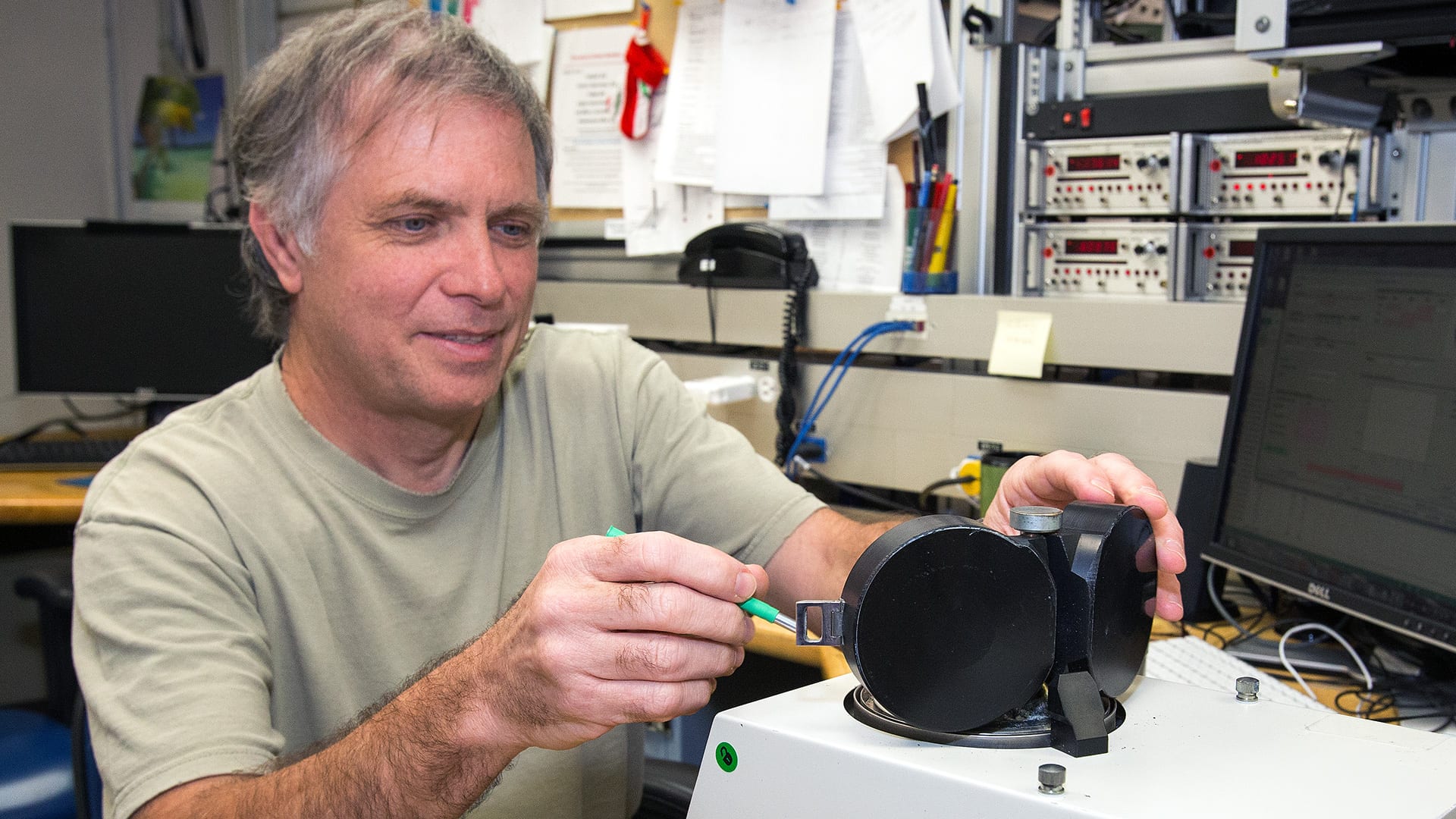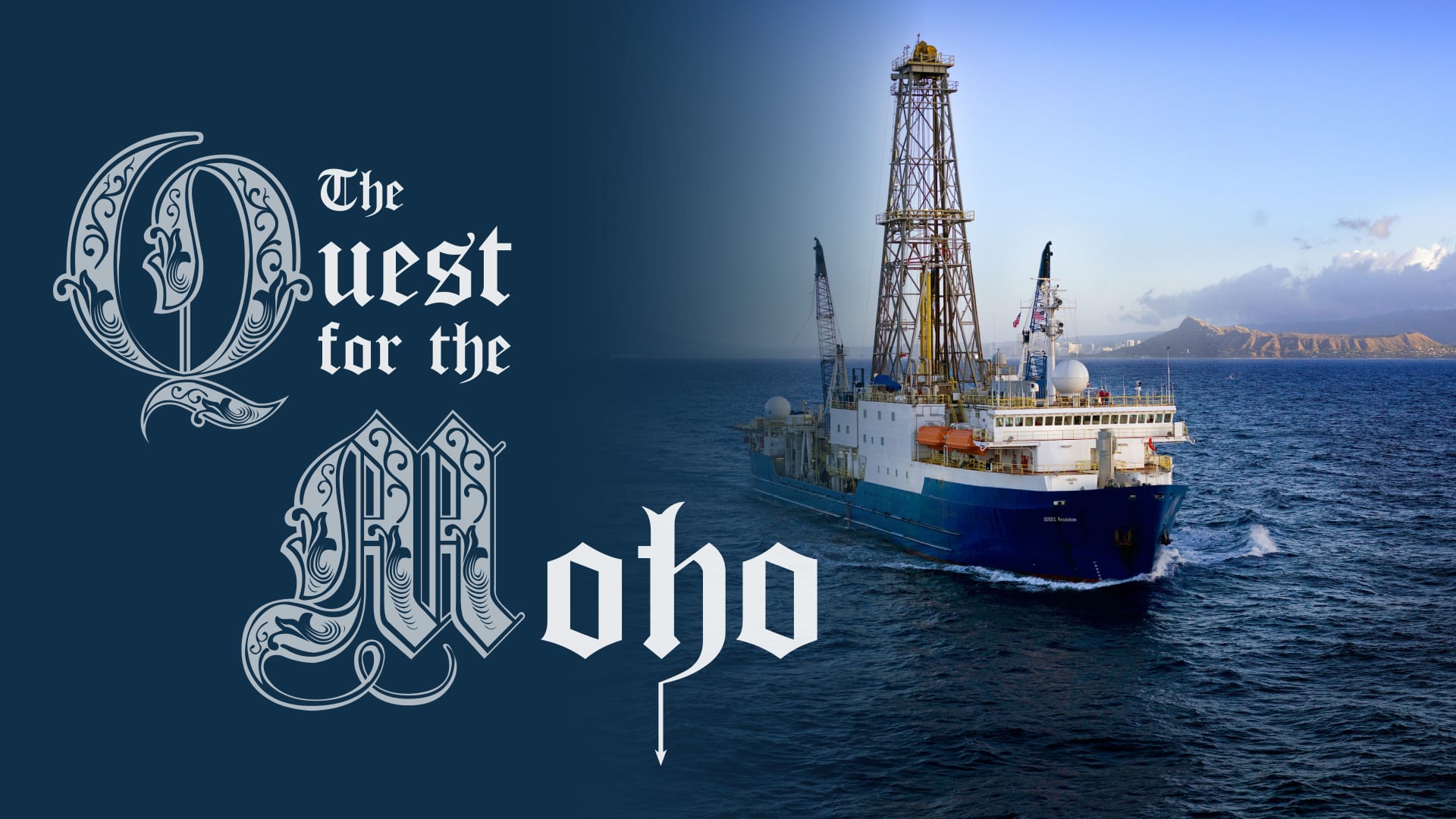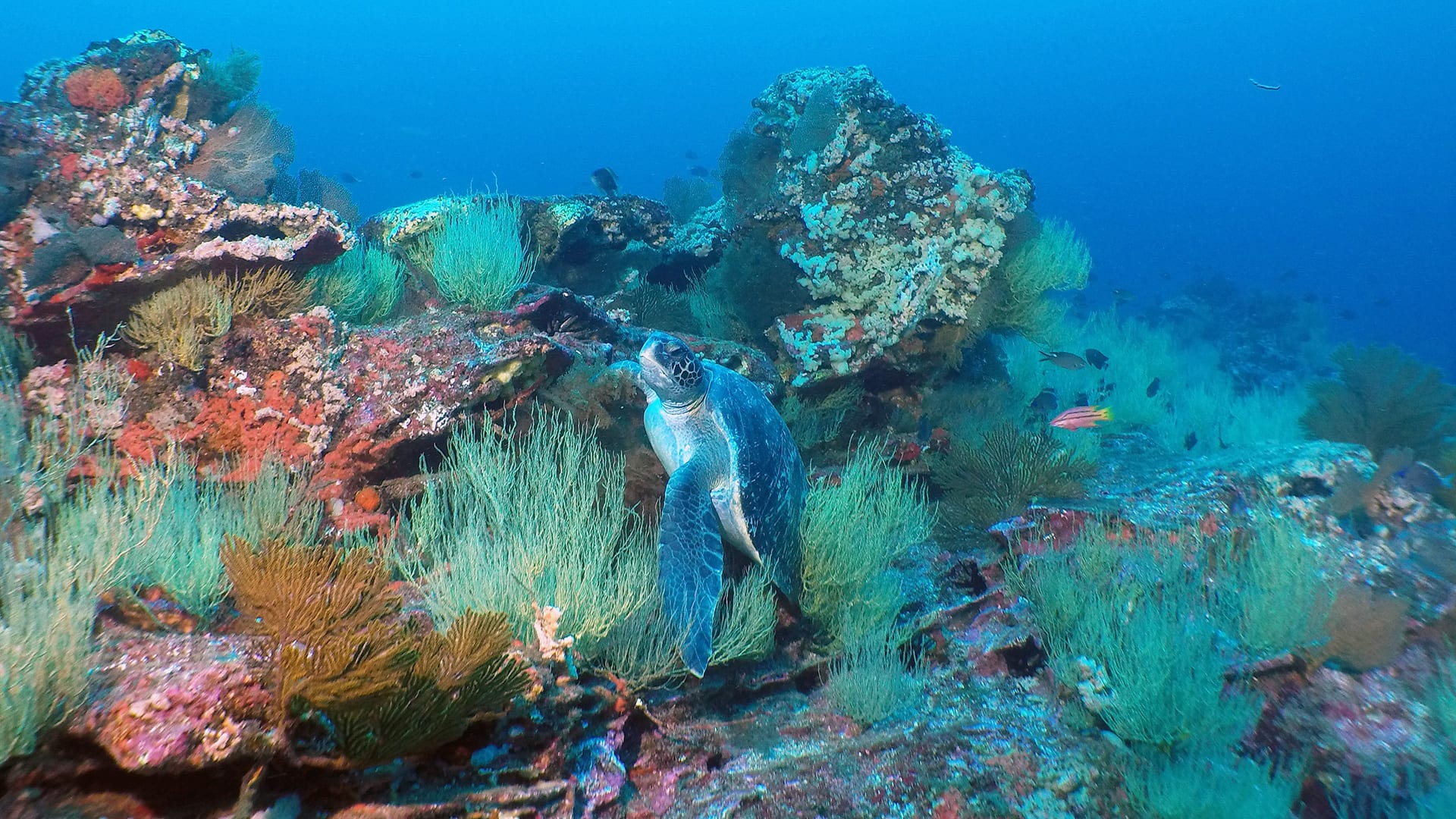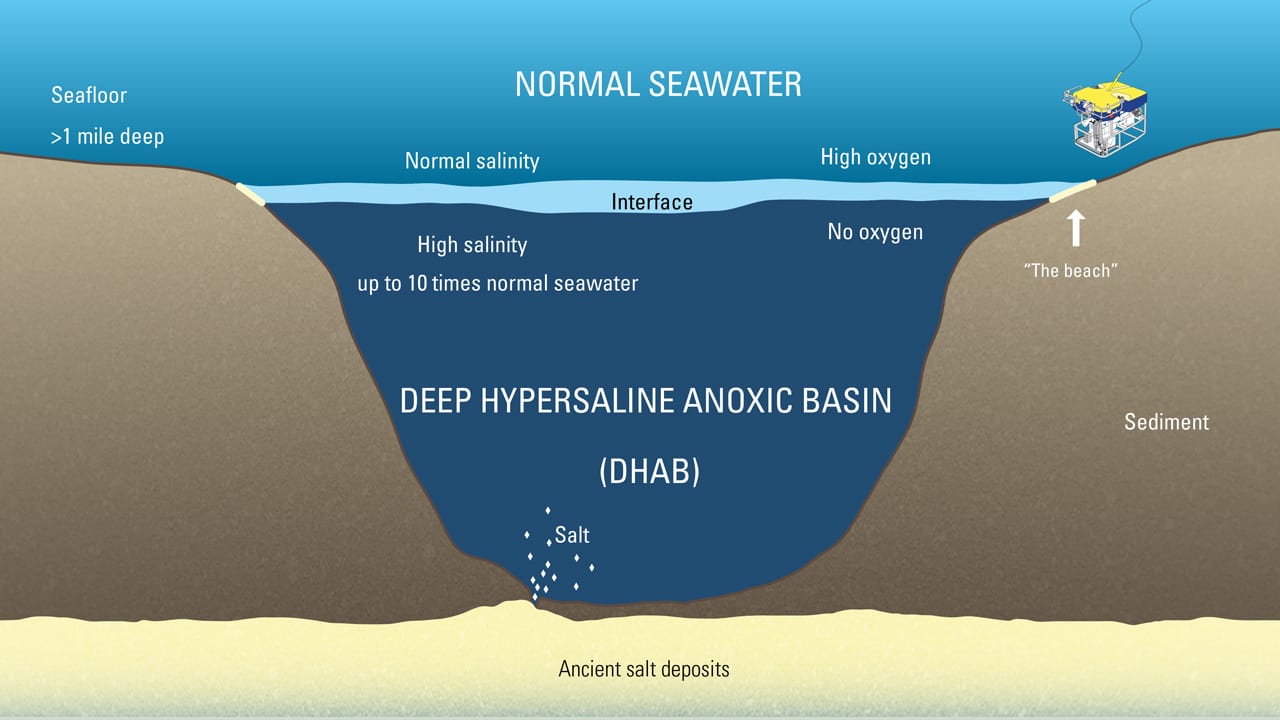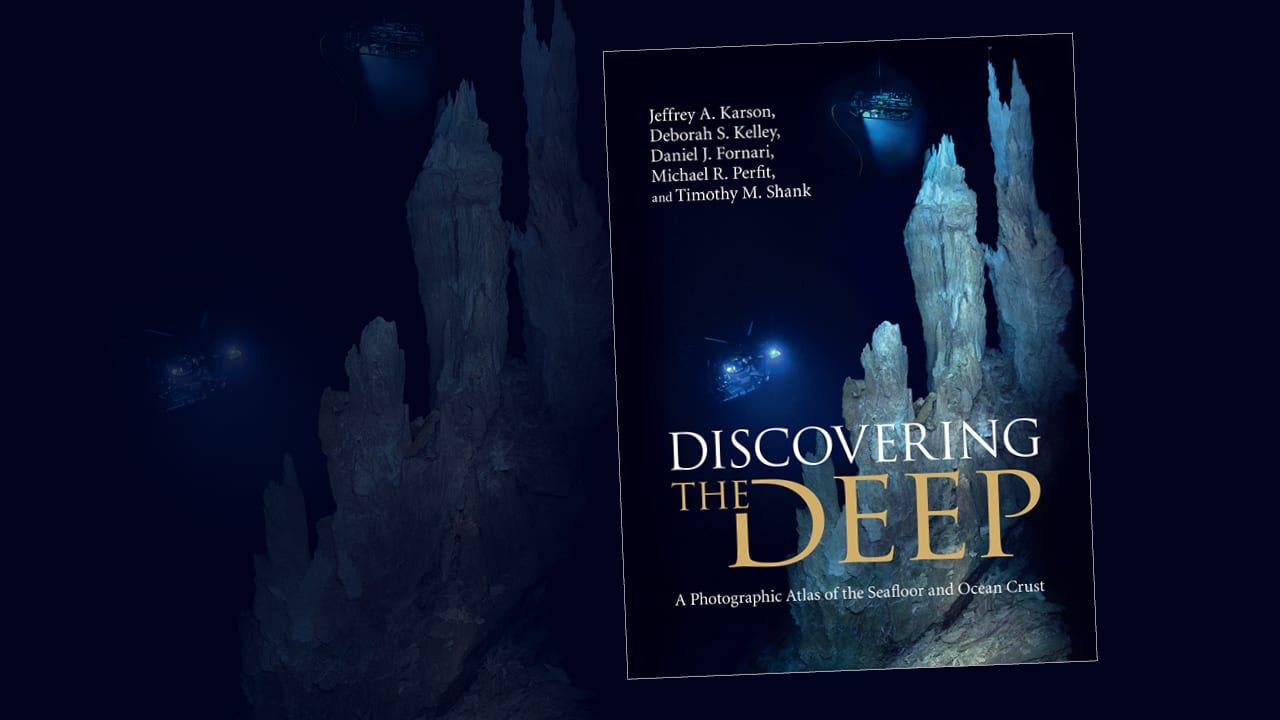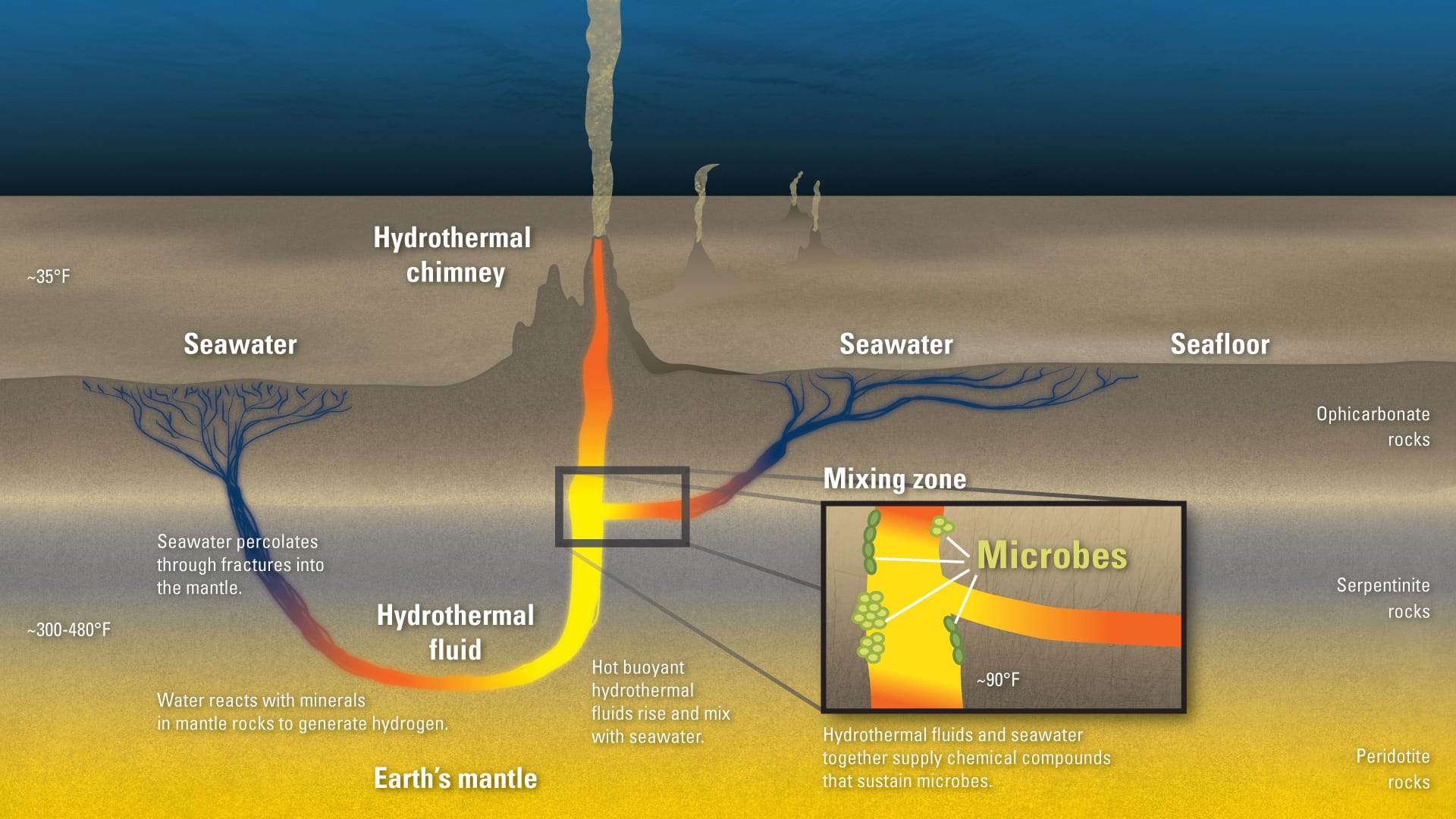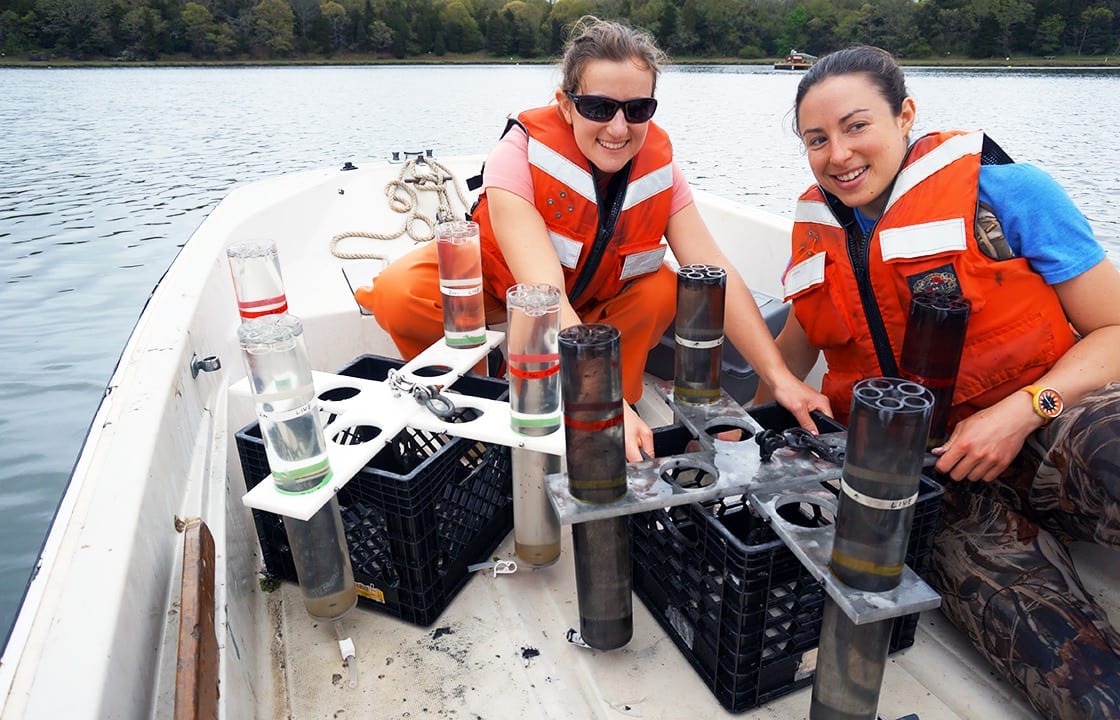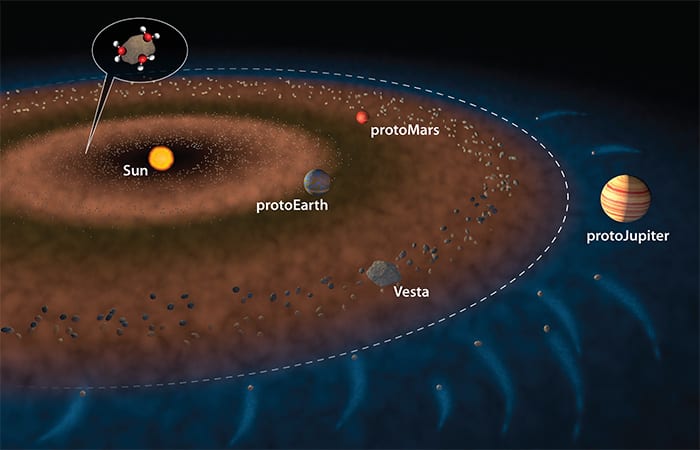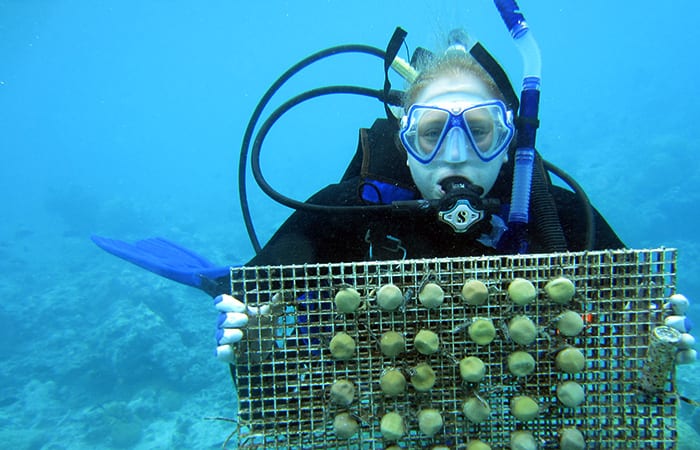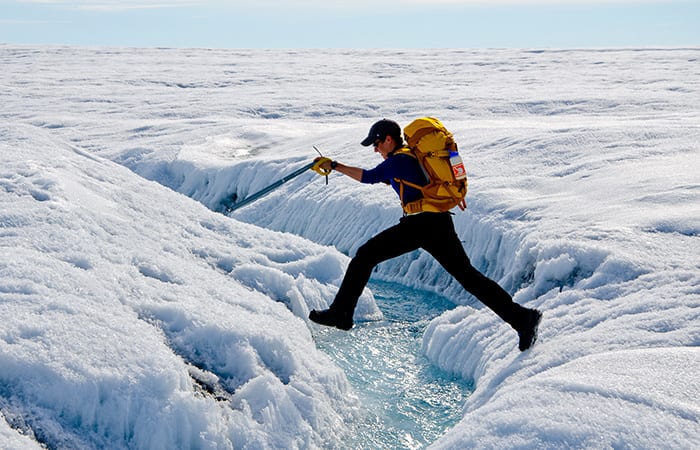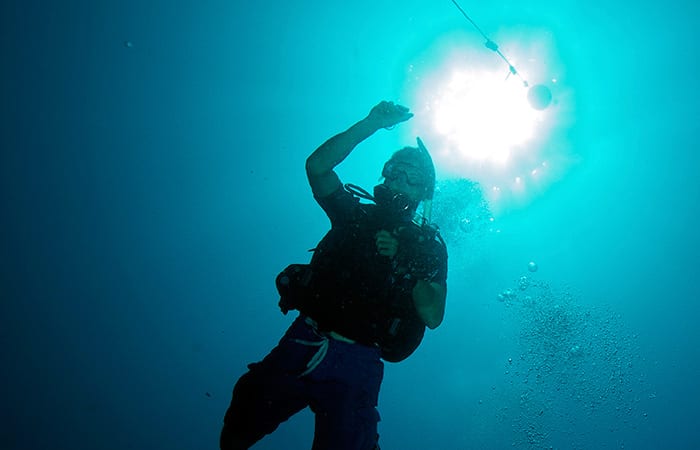Geology & Geophysics
Blue Holes and Hurricanes
Scientists are digging into clues that settle into sinkholes in the seafloor to learn about hurricane patterns in the past and in the future.
Read MoreVolcanic Arcs Form by Deep Melting of Rock Mixtures
A new study published in the journal Science Advances changes our understanding of how volcanic arc lavas are formed, and may have implications for the study of earthquakes and the risks of volcanic eruption.
Read MoreCorals Die as Global Warming Collides with Local Weather in the South China Sea
New research highlights the devastation caused when global-scale ocean warming interacts with short-lived weather anomalies, and adds urgency to the question of how reefs will fare through the end of this century.
Read MoreTaking Earth’s Inner Temperature
A new WHOI study led by WHOI suggests the mantleâÃÂÃÂthe mostly solid, rocky part of Earth’s interior that lies between its super-heated core and its outer crustal layerâÃÂÃÂmay be hotter than previously believed. The surprising finding could change how scientists think about many issues in Earth science including how ocean basins form.
Read MoreMore Floods & Higher Sea Levels
A research team predicts potentially big changes within the next century that would have significant impacts on those who live on or near the coast.
Read MoreWHOI Geologist Henry Dick Named AAAS 2016 Fellow
Henry Dick of the Woods Hole Oceanographic Institution (WHOI) has been named a Fellow of the American Association for the Advancement of Science (AAAS). Election as an AAAS Fellow is an honor bestowed upon association members by their peers.
Read MoreLife Dwells Deep Within Earth’s Crust
Aboard a drillship in the Indian Ocean, geologists pursued their mission to bore a hole thousands of feet through the seafloor to reach the Moho, the mysterious and never-before-penetrated boundary…
Read MoreAttracted to Magnetics
Maurice Tivey has probably endured more than a few bad puns, like the one in our headline, after he tells people what he does for a living. A geologist at…
Read MoreThe Quest for the Moho
For more than a century, scientists have made several attempts to drill a hole through Earth’s ocean crust to an interior layer of rock in Earth’s interior called the mantle.
Read MoreBeneath the Sea, the Galápagos Reveal More Marvels
The Galápagos Islands have offered biologists a natural laboratory ever since Charles Darwin’s day, but they’re also a frontier for geologists and volcanologists to test theories. The thirteen major volcanic…
Read MoreCan Animals Live Without Oxygen?
In 2010, a research team garnered headlines when it published evidence of finding the first animals living in oxygen-free conditions at the bottom of the sea. But a new study…
Read MoreThe Bottom of the Ocean On Top of Your Coffee Table
Here’s a way to journey to the seafloor without leaving your living room or classroom. Five deep-sea scientists have created a comprehensive, lavishly illustrated book that transports readers to Earth’s…
Read MoreMummified Microbes
Scientists have found evidence that microbes can thrive deep below the seafloor—sustained by chemicals produced by reactions between seawater and rocks in Earth’s mantle. It’s difficult to gain direct access…
Read MoreNot Just Another Lovely Summer Day on the Water
It looks like nice summer day on the water, but Alexis Fischer (right) and Alice Alpert, graduate students in the MIT-WHOI Joint Program, are hard at work preparing instruments called…
Read MoreHow Did Earth Get Its Ocean?
Adam Sarafian overcame a learning disability and surmounted heights as a an All-American pole-vaulter—all before launching a scientific career that has now allowed him to hurtle across the universe and back through time to the period when Earth was still forming.
Read MoreCoral Crusader
Graduate student Hannah Barkley is on a mission to investigate how warming ocean temperatures, ocean acidification, and other impacts of climate change are affecting corals in an effort to find ways to preserve these vital ocean resources.
Read MoreWhere Iron and Water Mix
A new study by researchers from University of Washington (UW), Woods Hole Oceanographic Institution (WHOI), and the University of Southern California, demonstrates that chemical-laden plumes erupted from vents at one section of Mid Ocean Ridge in the SE Pacific can be traced all the way across the Pacific for more than 4000 kilometers. Further, the study shows how the iron transported by this process is ultimately brought to the surface oceans of Antarctica where it is serves as a key life-sustaining micro-nutrient supporting up to 30 percent of all the organic carbon uptake in that ocean.
Read MoreMaking Organic Molecules in Hydrothermal Vents in the Absence of Life
In 2009, scientists from Woods Hole Oceanographic Institution embarked on a NASA-funded mission to the Mid-Cayman Rise in the Caribbean, in search of a type of deep-sea hot-spring or hydrothermal vent that they believed held clues to the search for life on other planets. They were looking for a site with a venting process that produces a lot of hydrogen because of the potential it holds for the chemical, or abiotic, creation of organic molecules like methane – possible precursors to the prebiotic compounds from which life on Earth emerged.
For more than a decade, the scientific community has postulated that in such an environment, methane and other organic compounds could be spontaneously produced by chemical reactions between hydrogen from the vent fluid and carbon dioxide (CO2). The theory made perfect sense, but showing that it happened in nature was challenging.
Now we know why: an analysis of the vent fluid chemistry proves that for some organic compounds, it doesn’t happen that way.
New research by geochemists at Woods Hole Oceanographic Institution, published June 8 in the Proceedings of the National Academy of Sciences, is the first to show that methane formation does not occur during the relatively quick fluid circulation process, despite extraordinarily high hydrogen contents in the waters. While the methane in the Von Damm vent system they studied was produced through chemical reactions (abiotically), it was produced on geologic time scales deep beneath the seafloor and independent of the venting process. Their research further reveals that another organic abiotic compound is formed during the vent circulation process at adjacent lower temperature, higher pH vents, but reaction rates are too slow to completely reduce the carbon all the way to methane.
Read MoreDiverse Corals Persist, But Bioerosion Escalates in Palau’s Low-pH Waters
As the ocean absorbs atmospheric carbon dioxide (CO2) released by the burning of fossil fuels, its chemistry is changing. The CO2 reacts with water molecules, lowering ocean pH in a process known as ocean acidification. This process also removes carbonate ions, an essential ingredient needed by corals and other organisms to build their skeletons and shells.
Read MoreScientists Find Trigger That Cracks Lakes
Graduate student Laura Stevens became a focal point of a research team that cracked a big mystery atop the Greenland Ice Sheet.
Read MoreMonster hurricanes reached U.S. during prehistoric periods of ocean warming
Intense hurricanes, possibly more powerful than any storms New England has experienced in recorded history, frequently pounded the region during the first millennium, from the peak of the Roman Empire into the height of the Middle Ages, according to a new study. The findings could have implications for the intensity and frequency of hurricanes the U.S. could experience as ocean temperatures increase as a result of climate change, according to the study’s authors.
Read MoreStudy Finds Deep Ocean is Source of Dissolved Iron in Central Pacific
A new study led by scientists at the Woods Hole Oceanographic Institution (WHOI) points to the deep ocean as a major source of dissolved iron in the central Pacific Ocean. This finding highlights the vital role ocean mixing plays in determining whether deep sources of iron reach the surface-dwelling life that need it to survive.
Read MoreStudy Supplies Insight into Behavior of African Monsoon
Think of the Sahara and you will conjure images of a vast desert landscape, with nothing but sand as far as the eye can see. But for a period of about 10,000 years, the Sahara was characterized by lush, green vegetation and a network of lakes, rivers and deltas.
This “green Sahara” occurred between 14,800 and 5,500 years ago during what is known as the “African Humid Period.” Why and how it ended is the subject of scientific study that holds important information for predicting the region’s response to future climate change.
In a study published this week in Nature Geoscience, a team of researchers provides new insight into the behavior of the African monsoon at the end of the African Humid Period and the factors that caused it to collapse.
Read MoreHidden Battles on the Reefs
A new study led by WHOI scientists shows how changing ocean conditions can combine to intensify erosion of coral reefs.
Read More
